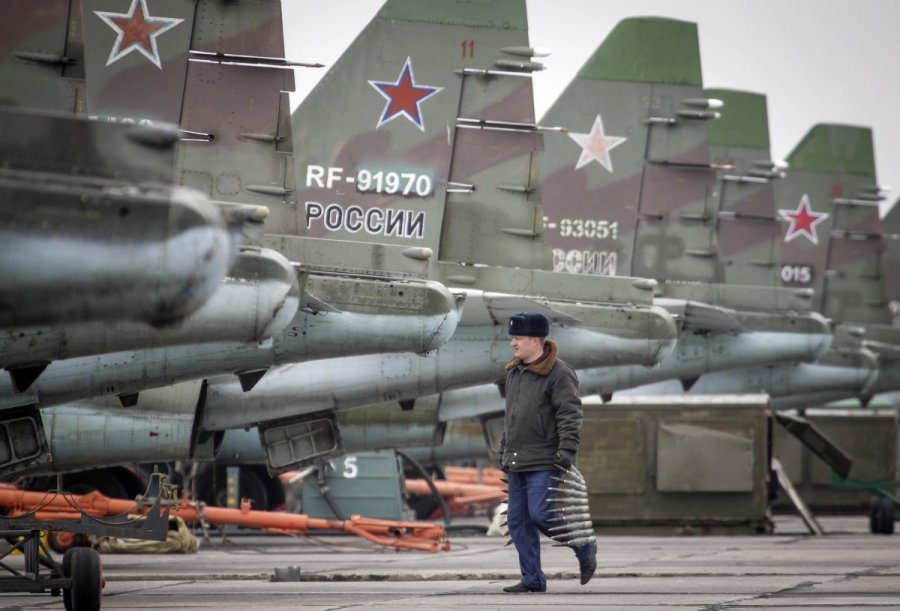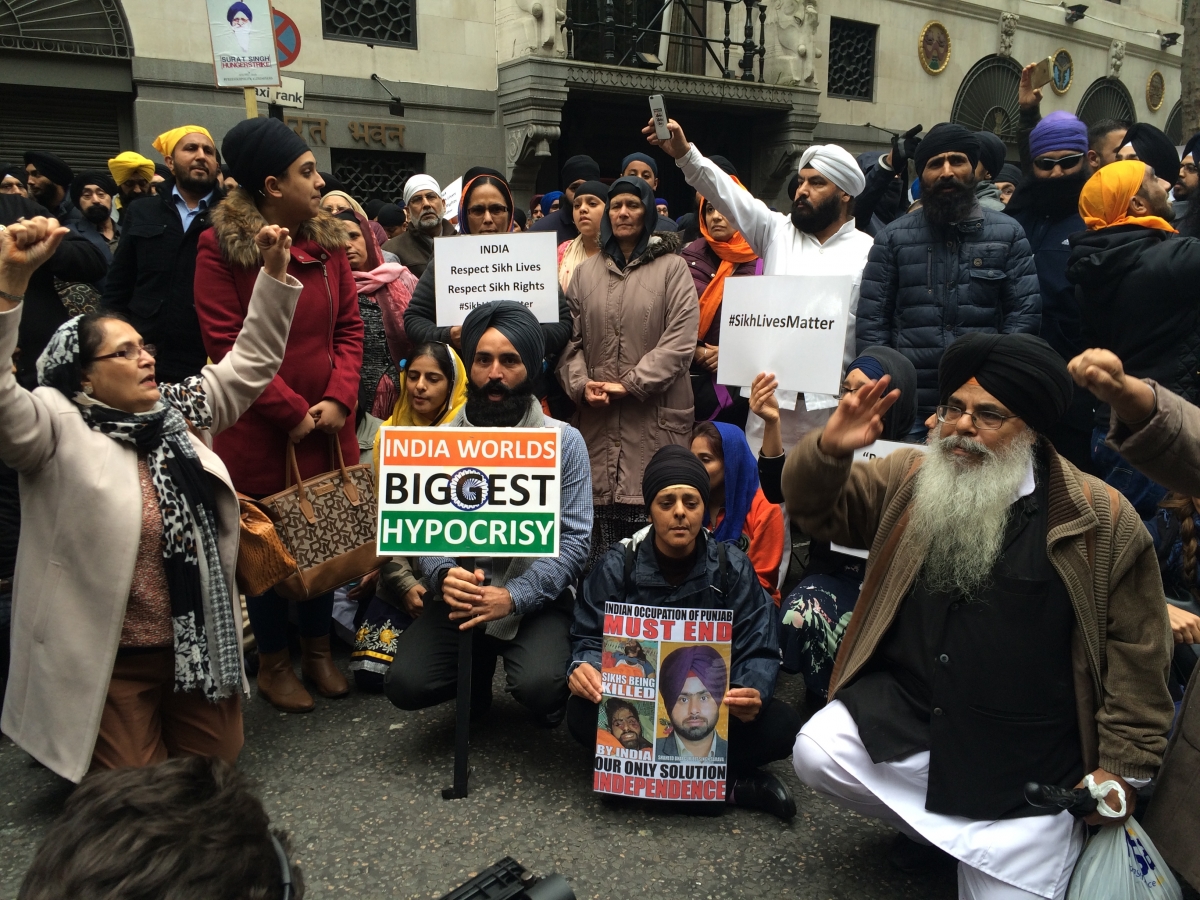By: Michael Ingram

A tourist attraction in the middle of a warzone is a peculiar sight to behold. I stood, dressed in my Sunday best, flanked by a cadre of soldiers. Dark-lensed Aviator glasses guarded their watchful eyes, and all hands hovered unflinchingly over their hip-mounted pistols. Pictures were being snapped nonchalantly amid a decades-long deadlock between ideological adversaries. Across the dividing line between freedom and totalitarianism, a single guard peered from behind a column; his binoculars transfixed on the imperialistic dogs before him. This is what Americans think of when they imagine a contentious border. But Korea’s Demilitarized Zone exists in a tense, but artificial stasis. The border people should be worried about what lies between Pakistan and India.
The disputed region of Kashmir is the fault-line between India and Pakistan. A festering sore of history, the line of control that runs through Kashmir represents perhaps the greatest existential threat to humanity today. While North Korea possesses roughly five crude nuclear weapons with non-effective delivery systems, both India and Pakistan possess around 100 nuclear weapons each. This perpetual standoff is rarely discussed in America, but in light of the nebulous War on Terror and shifting Asian power dynamics, nuclear war over Kashmir’s idyllic valleys may bring the threshold of mutually assured destruction closer to bear.
If Indo-Pakistani relations deteriorated enough to warrant nuclear war, the damage would extend far beyond the Indian subcontinent. Right now, there are dozens of missiles aimed at major cities in both countries, but while the initial strikes would be devastating, the aftermath would have global ramifications. Most crucially, a nuclear exchange on the Indian subcontinent would be a far different animal from the Cold War’s worst-case scenario. According to the New Scientist, a Cold War exchange would have primarily been focused on eliminating enemy missile silos. India and Pakistan’s standoff focuses not on eradicating retaliation capabilities but rather on systematically eliminating as much of each population as possible. Nuclear strikes would set massive cities ablaze, and the firestorms would kick up debris into the atmosphere, obscuring the sun. A nuclear winter would then cast lethal darkness across the planet.
The effects of full-scale nuclear exchange are predictably dire, but from where does all this mutual distrust stem? The rivalry between India and Pakistan began in 1947. The British crown jewel of India originally encompassed present day India along with Pakistan and Bangladesh (then known as East Pakistan, which seceded from Pakistan in 1971). After the sovereignty movement led by Gandhi achieved independence from the British Empire, religious violence surged. India sought a secular direction, anchored by the Hindu majority, but millions of Indian Muslims demanded their own autonomy. A mass exodus ensued, but the exchange between the Indian and Pakistani territories was marred by religiously motivated massacres. The atmosphere of distrust never fully dissipated.
The foremost example of the violent potential that India and Pakistan’s fragile relationship cultivates is the 2008 Mumbai Attacks. Known as India’s 9/11, 164 people perished and more than 600 were injured when Pakistani militants launched a series of coordinated attacks in India’s largest city. The attack lasted for four days and demonstrated the Islamists’ ability to strike at the heart of India. Pakistan initially denied involvement, but the lone surviving attacker confirmed the true origins of the attack. The gunman identified as a member of Lashkar-e-Taiba, a terrorist group officially condemned by Pakistan but supported the country’s omnipresent security apparatus the Directorate of Inter-Services Intelligence (ISI). Indian demands for retaliation became increasingly louder after the tragic event, but luckily no military response occurred, though Indian resentment still simmers. However, the Mumbai attacks were just the latest wound in a long history of conflict.
The first conflict between the two, young nations centered on the Indian state of Jammu and Kashmir. This province, nestled in the Himalayas on Pakistan and India’s northernmost border, embodied the frustration of the messy Indian split. The greater Kashmir region is home to a Muslim majority, but negotiations over territorial possession devolved into the Indo-Pakistani War of 1947-48. India retained control of the region contrary to Pakistani claims, and two more Kashmiri wars resulted (India-Pakistan War of 1965 and the Kargil War of 1999) along with a protracted insurgency that continues to this day.
Today, this region continues to incite a malicious loathing between the two countries. The mountainous terrain serves as a corridor for Islamist militants to enter and destabilize India. Islamic insurgency is a thorn in the side of both India and Pakistan, but the Kashmiri militants carry the official backing of the Pakistani government. The ISI uses these militants as an indispensable tool in reasserting Pakistani control over the disputed areas. The ISI cut their teeth in the militancy game by training the Taliban with American financial support amidst the Soviet invasion of Afghanistan, but now their training experience provides new opportunities. Conventional warfare would certainly result in a nuclear exchange, but these faceless fighters give Pakistan the leeway needed to maneuver around the tepid peace hanging over Kashmir.
The acerbic rhetoric between India and Pakistan has little middle ground, due to the fact that both sides desire total control of an intact Kashmir. However, their relations do not occur in a vacuum, and a rising dragon to the north has potential to further complicate an already complex scenario. China too has territorial possessions inside the Kashmir region. In fact, China claims territorial ownership of several points along the Himalayan mountain range that forms India’s northern border. China’s military modernization and economic power only solidifies many Indians’ perceptions that their land could soon be annexed.
As a result, the next generation of Indian politicians dreams of a more proactive stance on defense. Currently, India maintains a no first-use doctrine on nuclear weapons; Pakistan has no such condition. India previously based this principle on the ability to retaliate so thoroughly that no enemy would consider an exchange. However, India’s second largest political party, the Indian People’s Party (BJP), sees the first-use policy as something to be reconsidered. Seemingly poised to control the parliament after the current round of elections, the conservative, nationalist party sees no other option to territorial disputes other than a firm hand. The decision is not yet finalized, but any changes could invite further escalation.
Ultimately, the ongoing conflict between India and Pakistan is fueled by religiously driven nationalism. In such a dispute, compromise risks undermining both societal egos. However, the fanaticism which has grown from the territorial dispute assigns greater value to national power than human life. In effect, America has little recourse other than to suggest that cooler heads should prevail. Regardless, there is little hope the conflict will die down. Reservoirs perched high in the Himalayas provide drinking water for the increasingly overpopulated states, adding another element of national survival to the clash in Kashmir. Coupled with threats outside the dueling duo, Kashmir is a flashpoint that may flash much brighter than even the DMZ in Korea.
Unlike the ominous tranquility of the DMZ, the Kashmir line of control boasts stadium-seating for raucous citizens. Nationalistic fervor is a constant presence. Ornately dressed border guards peacock with elaborate dances, separated only by a dividing line marked by white paint. The mountain faces on each side are pock marked with camouflaged pillboxes and machine gun emplacements. Indian counter-terrorist forces routinely scour the rocky outcrops for illegal militants. The epicenter of this nuclear standoff forms a singular display of the historical indemnity between India and Pakistan. In the coming decades, the fate of the human race balances between these two irreconcilable enemies.
The Kashmir dispute survives not on reason, but emotion. A national sea change in Pakistan away from the use of state-backed terror is necessary for real change to be affected. Nonetheless, Americans should be aware of the world’s true most dangerous border. Even if America and the West can do nothing else other than petition Indian and Pakistani leaders, it must be made clear that risking the lives of billions outweighs a glorified egotistical dispute over a rocky mountain valley.

